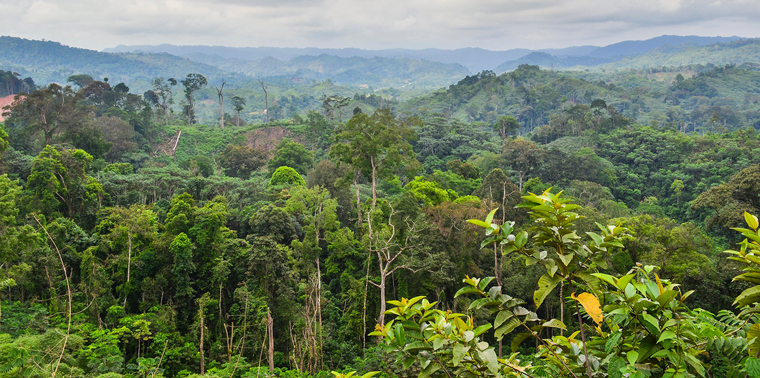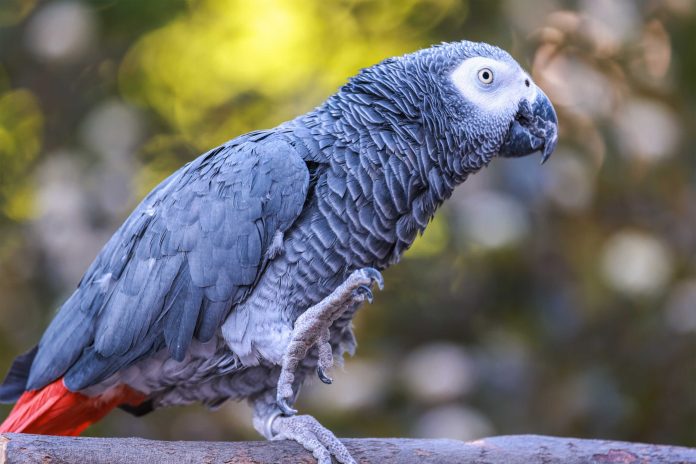The Democratic Republic of Congo has begun enforcing a national ban on the capture and trade of African grey parrots, and conservationists are marking the moment with a milestone: fifty of the birds, long targeted by traffickers, have been released back into the forests of Maniema after a full year of medical care and rehabilitation.
The release, led by the Lukuru Foundation in early October, is the latest sign of a country confronting a lucrative but devastating illegal wildlife trade, and of the long road ahead to protect one of Africa’s most threatened and charismatic species.

African grey parrots are globally renowned for their intelligence, and in the forests stretching from eastern Congo to the Gulf of Guinea they play a critical role as seed dispersers, shaping ecosystem resilience. Decades of trafficking have pushed them to the brink across Central Africa.
Buyers abroad have driven demand so high that only one in three birds captured in Congo’s forests survives the journey to markets overseas. Organizations such as Lukuru, which has been active in DRC conservation for four decades, describe a journey of trauma: broken wings, clipped feathers and birds stacked by the dozen in crates for flights out of Kisangani, Lodja or hidden bush airstrips.
Read also: Climate Trace’s latest global emissions data puts Africa’s climate future under sharper focus
The July 2025 decree issued by Congo’s Environment Ministry marks the country’s strongest action to date, outlawing possession, capture and commercial sale of the species. The ban builds on earlier restrictions first imposed in Tshopo province, but its enforcement now stretches nationwide, and into communities where the parrot trade has become part of the informal economy. Even in the days after the new law took effect, trapped parrots could still be found in Maniema’s Ngungwa and Kimwachi communities, a sign of both the ban’s necessity and the scale of the challenge.
Standing up effective protection will rely on more than policy. Conservationists emphasise that without genuine community engagement and visible enforcement, released birds are at risk of falling back into the same cycle of capture. Authorities in Tshopo have warned that high profits, coupled with the involvement of certain local officials, mean that dismantling entrenched wildlife networks will take sustained effort. This raises difficult questions about governance, transparency and incentives, factors that echo across Africa’s broader wildlife economy, where protected species often intersect with livelihoods under pressure.
To support the enforcement push, Congo is building its capacity to receive and rehabilitate confiscated birds. The Lukuru Foundation operates long-standing centers in Sankuru’s Lodja region and in Dingi, Maniema. In April, a new facility opened inside Kisangani Zoo in partnership with the Congolese Institute for Nature Conservation (ICCN), providing additional aviaries and veterinary capacity. By September, that center alone had already taken in 112 parrots rescued from trafficking operations.
The cost of care underscores the scale of the commitment required. Rehabilitation can take months before birds regain the strength and confidence to fly. Feeding, treatment and staff support add up quickly: caring for 100 parrots for a month costs around USD 1,300 at Lodja, USD 2,200 in Kisangani and almost USD 2,900 in the remote Dingi site, where staff and supplies must travel long distances. Aviary construction can exceed USD 1,000 per structure, and rehabilitation must run in parallel with law enforcement, seizures, veterinary inspection and safe release protocols.
Despite these costs and the risk of recapture, the number of successful returns to the wild is increasing. The fifty birds released in Maniema are among nearly 400 that have been rehabilitated and set free since Lukuru’s programme began. A further fifty are expected to take flight before year-end. The Kisangani center is preparing its first releases toward the end of 2025, once incoming birds recover full mobility and survive the critical reconditioning process in large flight aviaries.
Read also: Uganda’s last Rüppell’s Vulture Colony faces collapse amid human pressures
Returning a parrot to the forest is not the end of the story. The Lukuru and ICCN teams deliberately select release sites within ranger-patrolled conservation areas in Maniema and Tshopo to reduce the risk of illegal capture. Still, with high-value trafficking routes intact, even these birds remain vulnerable. Conservation planners argue that long-term success depends on a broader cultural shift, recognizing the ecological role of parrots, reducing reliance on wildlife income and building an enforcement system that protects animals not only at checkpoints but where they live.
These efforts also reflect a continental debate about how Africa protects its biodiversity while expanding economic opportunity. Wildlife trafficking drains natural wealth while benefiting only a handful of middlemen. By contrast, community-led conservation, eco-tourism and legal biodiversity enterprises can share value more equitably. In countries like Congo, which holds the largest tropical rainforest complex after the Amazon, biodiversity protection intersects directly with climate finance, food security and international obligations.
The African grey parrot is now a test of this transition. A future where local communities help protect the species and retain the benefits of healthy ecosystems could redefine how Congo and its neighbors manage nature under growing global scrutiny. For now, each bird that rises above Maniema’s canopy signals both progress and vulnerability, proof of what rehabilitation can achieve, and a reminder that a ban on paper must take root on the ground to truly safeguard a species that has already lost too much.
As Congo enforces its decree, the next months will reveal whether strengthened law, growing expertise and community participation can turn promising headlines into lasting protection. The forests are watching, and so are the parrots now winging home.






